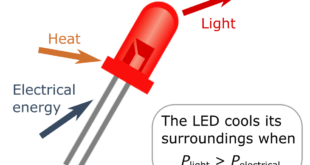Wireless power transfer (WPT), wireless power transmission, wireless energy transmission (WET), or electromagnetic power transfer is the transmission of electrical energy without wires as a physical link. In a wireless power transmission system, a transmitter device, driven by electric power from a power source, generates a time-varying electromagnetic field, which …
Read More »CubeSat cameras and optical payloads for Earth Observation small satellites
Constellations of satellites are being proposed in large numbers; most of them are expected to be in orbit within the next decade. They will provide communication to unserved and underserved communities, enable global monitoring of Earth and enhance space observation. In a Low Earth Orbit (LEO), a satellite completes about …
Read More »Nano-opto-electro-mechanical systems (NOEMS)
Modern microelectronic semiconductors and integrated circuits provide remarkable computational and memory capabilities but lack the capability to interface with the physical world directly. MEMS (MicroElectroMechanical Systems) and the even smaller NEMS (Nano ElectroMechanical Systems) integrate sensors and actuators on microelectronic circuitry and enabling these products, awareness of the surroundings in …
Read More »Liquid crystal on silicon (LCoS or LCOS)
Flat-panel display technology is exploding on several fronts as more screens are required for more devices. CRT still works well for screen sizes up to 40 inches. But if you want a larger screen, a flat panel TV, widescreen model or HDTV compatibility, you’ll have to choose from several types …
Read More »Infrared detectors enable Night Vision Devices, Robotic servicing mission to military missile tracking
Remote sensing is the science of acquiring information about the Earth’s surface without actually being in contact with it. This is done by sensing and recording reflected or emitted energy and processing, analyzing, and applying that information. Some examples of remote sensing are special cameras on satellites and airplanes taking …
Read More »Emerging ultrashort pulse laser (USPL) or Femtosecond laser directed energy weapons (DEW)
The Laser Directed Energy Weapons (DEWs) offer a transformational ‘game changer’ to counter asymmetric and disruptive threats, while facing increasingly sophisticated traditional challenges. Laser technology provides major advantages for military applications over kinetic weapons due to High precision and rapid on-target effect, precise and scalable effects, avoidance of collateral damage …
Read More »Thermophotonics cooling with light-emitting diodes
Thermophotonics (often abbreviated as TPX) is a concept for generating usable power from heat which shares some features of thermophotovoltaic (TPV) power generation. Thermophotonics was first publicly proposed by solar photovoltaic researcher Martin Green in 2000. However, no TPX device is known to have been demonstrated to date, apparently because …
Read More »Anti-Reflection (AR) Coatings
Optics are employed in virtually every area of military operations, from vision systems and target designators used by troops on the ground, through guidance systems utilized in both manned and unmanned aircraft, to reconnaissance and surveillance packages carried by satellites in Earth orbit. These optics are often subjected to large …
Read More »Quantum enhanced LIDAR will help reduce environmentally damaging methane leaks from the oil and gas industry
In purely economic terms, methane leaks from well-heads and pipelines cost the oil and gas industry between $6bn and $30bn a year. In the US, methane leaks from the natural gas and petroleum industry are now the number one source of methane emissions, surpassing livestock digestion and landfill. Although it …
Read More »Quantum microwave photonics
By harnessing quantum superposition and entanglement, remarkable progress has sprouted over the past three decades from different areas of research in communication, computation and simulation. Microwave photonics (MWP) typically using classic optical methods and devices to generate, transport, and process radio-frequency (RF) signals is a recently developed area of …
Read More » International Defense Security & Technology Your trusted Source for News, Research and Analysis
International Defense Security & Technology Your trusted Source for News, Research and Analysis






